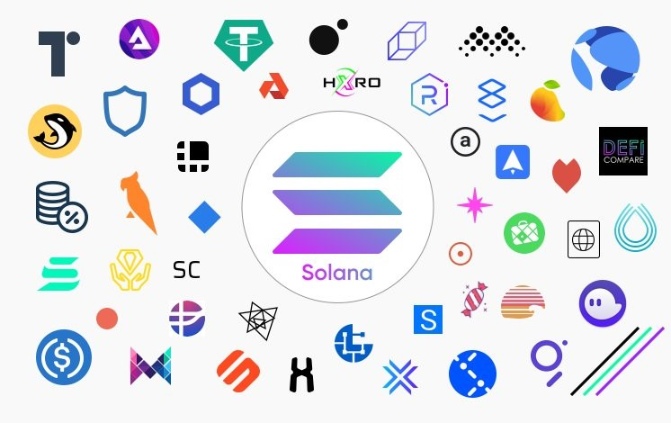Solana, commonly referred to as SOL, is one of the fastest-growing blockchain technologies. To give you an in-depth understanding of how its ecosystem functions, we shall discuss its workability and related concepts.
What is SOL Ecosystem?
Solana is a web-scale blockchain that provides secure, fast, decentralized, and scalable marketplaces. Currently, the Sol ecosystem supports 400 ms Block Times and 50,000 transactions per second (TPS).
The purpose of the Sol ecosystem is to demonstrate that software algorithms can create a blockchain. This allows transaction throughput to operate proportionally with network bandwidth. Doing so satisfies all the three principles of a blockchain: decentralization, security, and scalability. In addition, the Sol ecosystem can support up to 710,000 TPS on a standard gigabit network and around 28.5 million TPS on a 40 GB network.
The Types of Consensus Ecosystem Uses
Being one of the most effective permission-free blockchains globally, the Sol ecosystem has 200 distinct nodes supporting an output of over 50,000 TPS when operating with GPUs. However, there is a challenge when working with distributed systems due to time disagreements. Unlike Bitcoin that uses the PoW algorithm as its ecosystem’s decentralized clock, Solana uses a Proof of history method. With this method, you can develop historical records proving an event occurred during a specific time. It is important to note that the algorithm uses a high-frequency verifiable delay function. To analyze data, this function needs a specific number of steps.
For every event or transaction it evaluates, the ecosystem gives it a unique count and hash that can be verified effectively and publicly. The count also allows users to know when each event or transaction occurred, functioning as a cryptocurrency time-stamp. There is a cryptographic clock within every node that tracks the network’s ordering events and time. By doing so, it allows more efficiency and throughput within the network.
What is a SOL Cluster?
The Solana cluster is critical in Solana’s software operations. In simpler terms, a cluster is a group of computers working together. You can view these computers from the outside as a single system. Every Sol cluster is a set of privately owned computers working together — they can also work against each other.
These computers play an essential role by verifying the output of unreliable and untrusted programs submitted by users. In addition, you can use these clusters anytime you hope to preserve an essential record of events. You can also use them as a programmatic interpretation of events.
Some real-life applications of this technology are tracking computers not working effectively. The technology is also effective in tracking the possession of real-world assets. What makes this system advantageous is that as long as you have a copy of the ledger, you can reproduce the programs and keep them independent.
This is very important, especially when seeking to keep vital project records. Some of the industries Sol’s ecosystem is thriving in include banking, retail, and manufacturing. The advancement in this technology is expected to make manufacturing and supply chain easier.





